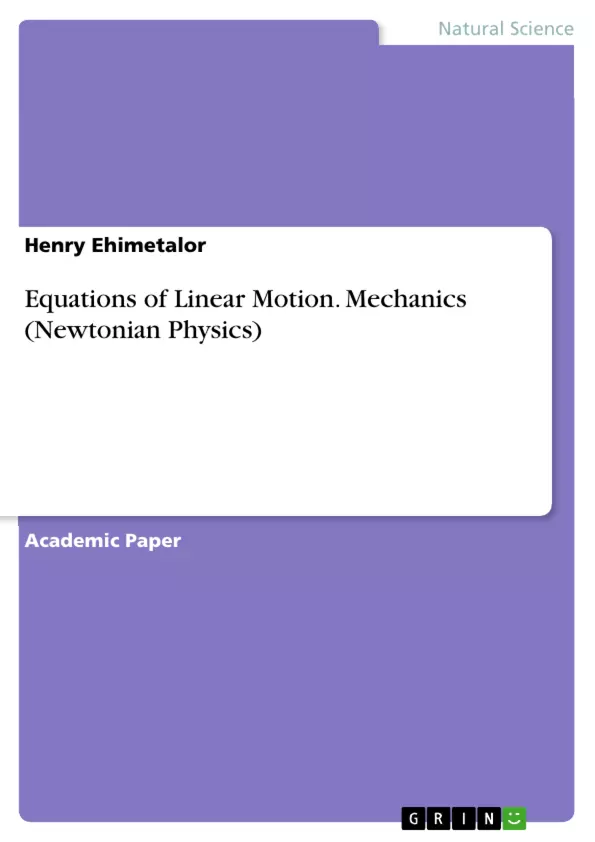The research work is aimed at proofing equations of linear motion through normal formula derivation, calculus notations with a new innovation using matrices to express the equation of linear motion: as well as other physical quantities in mechanics such as: force, work, impulse, linear, momentum, pressure and power in a connective manner.
It also tries to relate Sir Isaac Newton's (1642 – 1728) laws of motion to the experimental works of the great Italian physicist Galileo Galile (1564 – 1642).
Table of Contents
- INTRODUCTION
- CONCLUSION
- PROOFS OF EQUATION OF LINEAR MOTION (ELM) USING CALCULUS MOTIONS
- ALTERNATIVE METHOD
Objectives and Key Themes
This research paper aims to prove the equations of linear motion through various derivations, including calculus notations and a novel approach using matrices to represent linear motion and other fundamental mechanics concepts. The research seeks to connect these equations with Sir Isaac Newton's laws of motion and Galileo Galilei's experimental work.
- Derivation of equations of linear motion using calculus notations
- Matrix representation of linear motion equations
- Connection of linear motion equations with Newton's laws of motion
- Application of matrix representation to other physical quantities in mechanics
- Historical context and contribution of Newton and Galileo
Chapter Summaries
- INTRODUCTION: The chapter introduces the research topic and its significance. It highlights the importance of calculus in Newtonian Physics and emphasizes the need for introducing this approach to students at all levels. This chapter also outlines the new innovation of using matrices to represent linear motion equations and other physical quantities in mechanics.
- CONCLUSION: The chapter summarizes the research findings, emphasizing the different methods used to prove the equations of linear motion, including calculus notations and matrix representation. It also highlights the significant additions made to the body of knowledge, including the introduction of new formulas and the use of matrices in representing various physical quantities in mechanics.
- PROOFS OF EQUATION OF LINEAR MOTION (ELM) USING CALCULUS MOTIONS: This chapter demonstrates various proofs of the equations of linear motion using calculus notations and provides alternative methods for derivation.
- ALTERNATIVE METHOD: This chapter focuses on alternative methods for deriving the equations of linear motion using calculus notations.
Keywords
This research work focuses on Newton's laws of motion, equations of linear motion, calculus notations, matrix representation, force, work, linear momentum, impulse, pressure, power, and the contributions of Sir Isaac Newton and Galileo Galilei to the field of mechanics.
- Quote paper
- Henry Ehimetalor (Author), 2023, Equations of Linear Motion. Mechanics (Newtonian Physics), Munich, GRIN Verlag, https://www.grin.com/document/1380007



